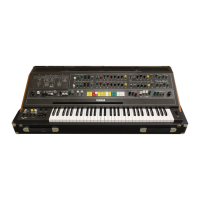
 Loading...
Loading...
Do you have a question about the Yamaha CS-80 and is the answer not in the manual?
| Polyphony | 8 voices |
|---|---|
| Oscillators | 2 per voice |
| LFO | 1 |
| Aftertouch | Polyphonic |
| Keyboard | 61 keys |
| Effects | Chorus, Tremolo |
| Weight | 220 lbs (100 kg) |
| Type | Analog |
| Ribbon Controller | Yes |
| Year Released | 1976 |
| Filter | High-pass and low-pass |